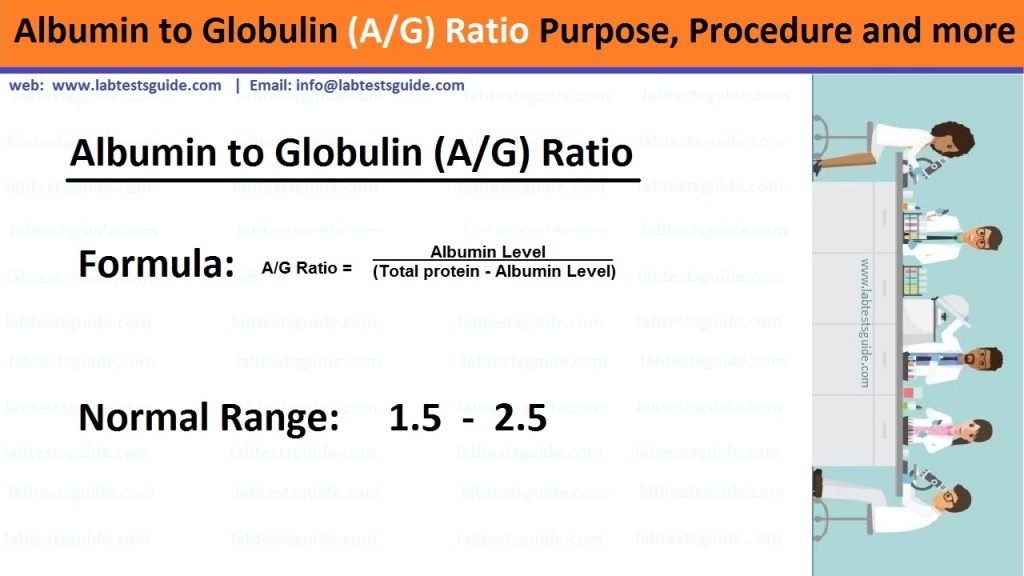

Your albumin is normal, but your globulin is very high.There are several ways your albumin/globulin ratio may become low. įor reference, the total amount of albumin in the blood is normally around 3.4 to 5.4 g/dL, and the total amount of globulin should be about 2.0 to 3.9 g/dL. Your blood usually contains a little more albumin than globulin, which is why a normal ratio is slightly higher than 1. In general, an albumin/globulin ratio between 1.1 and 2.5 is considered normal, although this can vary depending on the laboratory performing the test. The A/G ratio is derived from the total protein test, which itself is part of a comprehensive metabolic panel. Ĭheck out our articles on albumin and globulin for more information on each protein. īoth albumin and globulin are primarily made in the liver, although some types of globulin are created by white blood cells. They bind to pathogens like viruses and play a vital role in the immune system. Gamma globulins, the immunoglobulins, act as antibodies. Alpha and beta globulins act as transporters and can inhibit some enzymes. Globulins are a class of proteins found in the blood which come in several forms. Albumin also binds fats and helps with fat metabolism. Many substances (including some hormones, nutrients, and medications) can attach to albumin, making it an important transporter in the blood. Its main function is to maintain osmotic pressure, the mechanism that prevents fluids from leaking out of the blood vessels and into surrounding tissues. Overview of Serum ProteinsĪlbumin is the most common protein found in the bloodstream. There is emerging evidence that a low ratio (less albumin and more globulin) may be associated with the risk of cancer and may also predict worse outcomes in cancer and heart disease patients. Īn imbalance in the ratio of albumin to globulin may signify ongoing inflammation, liver problems, or in rare cases immunodeficiency.

The albumin/globulin ratio (A/G ratio for short) is a test that compares the concentrations of albumin and globulin in the blood Īlbumin and globulin are proteins that are naturally found in the serum, the liquid part of your blood that doesn’t include blood cells or clotting components. Read on to learn what results are considered normal, the causes of high and low ratios, and what you can do to fix them. Many illnesses can throw off the balance between albumin and globulin in your blood.
#2.3 ag ratio full
A plus sign next to the number “” means that the information is found within the full scientific study rather than the abstract. If you feel that any of our content is inaccurate, out-of-date, or otherwise questionable, please leave a comment or contact us at that each number in parentheses is a clickable link to peer-reviewed scientific studies. Our goal is to not have a single piece of inaccurate information on this website. They are continually monitored by our internal peer-review process and if we see anyone making material science errors, we don't let them write for us again. Our science team must pass long technical science tests, difficult logical reasoning and reading comprehension tests. Our science team is put through the strictest vetting process in the health industry and we often reject applicants who have written articles for many of the largest health websites that are deemed trustworthy. Our team comprises of trained MDs, PhDs, pharmacists, qualified scientists, and certified health and wellness specialists.Īll of our content is written by scientists and people with a strong science background. We are dedicated to providing the most scientifically valid, unbiased, and comprehensive information on any given topic. We believe that the most accurate information is found directly in the scientific source. SelfDecode has the strictest sourcing guidelines in the health industry and we almost exclusively link to medically peer-reviewed studies, usually on PubMed.


 0 kommentar(er)
0 kommentar(er)
